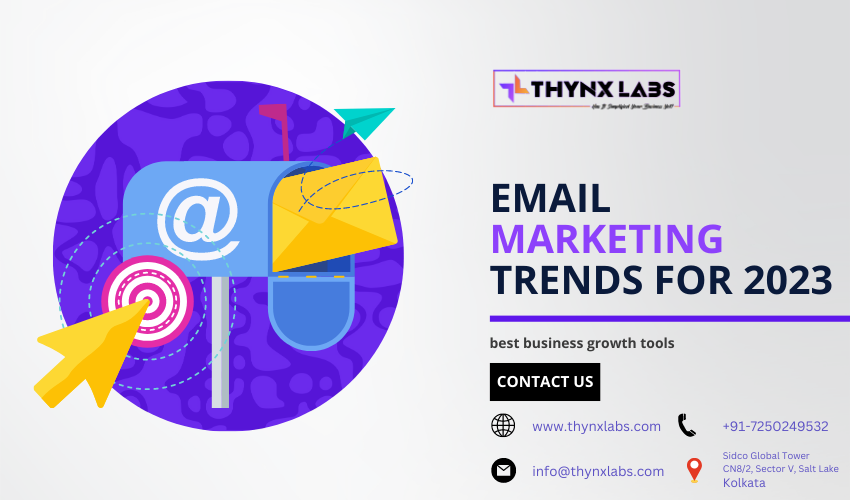Building Successful Email Marketing Funnels
Email marketing remains one of the most powerful tools in a marketer's arsenal. The ability to connect directly with potential customers and nurture them into loyal clients is invaluable. However, the key to harnessing the true potential of email marketing lies in constructing effective email marketing funnels. These funnels guide subscribers through a journey, from initial contact to conversion. In this article, we'll explore the step-by-step process of building successful email marketing funnels that engage, convert, and retain customers.
Understanding Email Marketing Funnels
Email marketing funnels are systematic pathways designed to guide subscribers from being mere prospects to becoming loyal customers. These funnels consist of a series of strategically timed emails that deliver value, build trust, and gently nudge recipients towards making a purchase or taking a desired action.
Defining Your Funnel's Purpose and Goals
Before diving into the mechanics, it's crucial to define the purpose of your email marketing funnel. Are you aiming to generate leads, convert sales, or nurture customer relationships? Set clear goals to measure success and tailor your funnel accordingly.
Segmenting Your Audience for Personalization
Effective email marketing relies on personalized content. Divide your subscriber list into segments based on demographics, behavior, or interests. This enables you to craft content that resonates with each group, increasing engagement and conversion rates.
Crafting Compelling Lead Magnets
A lead magnet is an irresistible incentive that encourages people to subscribe to your email list. It could be an e-book, webinar, discount, or any valuable resource. Your lead magnet should align with your target audience's needs and offer a solution.
Creating Captivating Welcome Emails
The welcome email sets the tone for your relationship with subscribers. Use this opportunity to express gratitude, introduce your brand's value proposition, and provide clear expectations for future emails.
Nurturing Subscribers with Engaging Content
Engagement is the cornerstone of successful email marketing. Segment your content strategy based on subscriber preferences and pain points. Leverage storytelling to create emotional connections that resonate and keep readers eager for more.
Segment-Specific Content Strategy
Tailor content to address the unique interests of each segment. Provide solutions to their specific challenges, positioning your brand as a valuable resource.
The Power of Storytelling
Craft stories that evoke emotions and create relatable experiences. Stories have the power to humanize your brand and make subscribers feel understood.
Integrating Persuasive Call-to-Actions
Effective CTAs guide subscribers towards desired actions. Strategically place CTAs in your emails, using persuasive language and incorporating urgency and scarcity to prompt quick responses.
Strategic Placement of CTAs
Position CTAs where they're naturally integrated, such as after valuable insights or solutions. Make them stand out visually to capture attention.
Using Urgency and Scarcity
Limited-time offers and exclusive deals create a sense of urgency and scarcity, compelling subscribers to take immediate action.
Automating and Sequencing Emails
Automation streamlines your email marketing efforts. Utilize drip campaigns to gradually introduce subscribers to your brand, and trigger emails based on subscriber behaviors.
Drip Campaigns for Gradual Engagement
Send a series of emails that provide increasing value, guiding subscribers from awareness to making informed decisions.
Behavior-Triggered Emails
Set up emails triggered by specific actions, like abandoned carts or downloads. These emails deliver tailored content when subscribers are most engaged.
Analyzing, Testing, and Optimizing
Regularly analyze your email metrics to understand what's working and what isn't. Implement A/B testing to refine your email content, design, and CTAs for optimal results.
A/B Testing for Continuous Improvement
Compare different email elements to identify the most effective combinations. Test subject lines, content, visuals, and CTAs to optimize performance.
Monitoring Metrics and KPIs
Track open rates, click-through rates, conversion rates, and unsubscribe rates to gauge the effectiveness of your funnel.
Maintaining Consistency and Relevance
Consistency builds trust, so ensure your emails align with your brand's voice and values. Keep subscribers engaged over time through regular updates and re-engagement campaigns.
Regular Content Updates
Share fresh insights, industry news, and updates to maintain subscribers' interest and demonstrate your expertise.
Re-engagement Campaigns
Win back inactive subscribers with targeted campaigns that offer value and remind them why they subscribed in the first place.
Conclusion
Crafting a successful email marketing funnel is a journey that requires strategic planning, personalized content, and continuous optimization. By understanding your audience, leveraging engaging content, and employing smart automation, you can build a funnel that drives conversions and builds lasting customer relationships.
FAQs
Q.1 What's the primary goal of an email marketing funnel?
The primary goal is to guide subscribers towards making a purchase or taking a desired action by delivering value over a series of emails.
Q.2 How do I create effective CTAs in my emails?
Effective CTAs use persuasive language and may include urgency or scarcity to encourage quick responses.
Q.3 What's the benefit of segmenting my email list?
Segmenting allows you to send targeted content that's relevant to each group, increasing engagement and conversions.
Q.4 Why is A/B testing important in email marketing?
A/B testing helps you identify which elements of your emails are most effective, enabling continuous improvement.
Q.5 How often should I send emails to my subscribers?
Consistency is key, but it depends on your audience. Test different frequencies to find the right balance between engagement and not overwhelming your subscribers.


